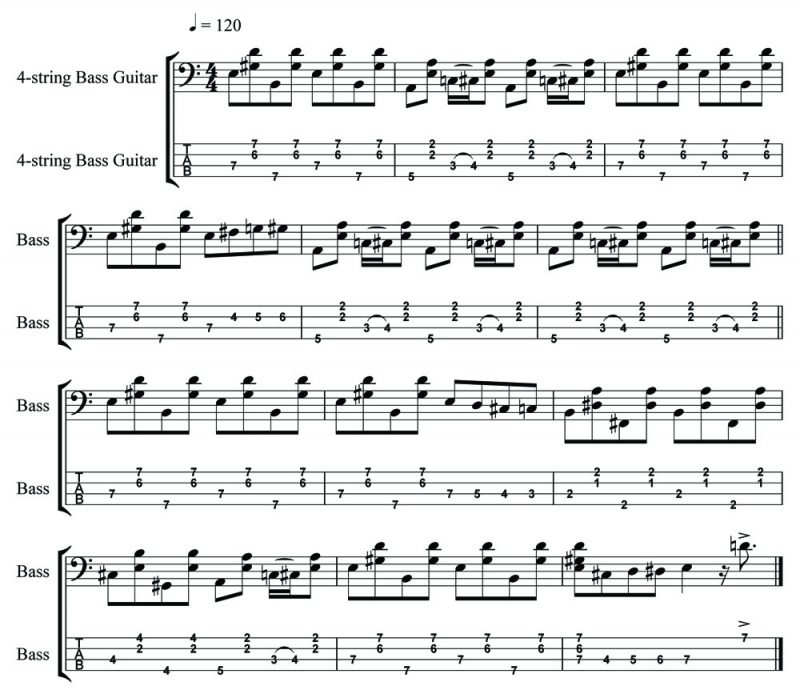Deep Thinking: Some Country Slap Blues
Deep Thinking: Some Country Slap Blues
In this issue we are going to take some of the techniques from last issue’s Deep Thinking column and turn them into a country slap blues 12-bar pattern.
Imagine you are in a bluesy-styled band that has a bit of country in the repertoire (not that unusual), and you are asked to take a solo. (A bit hard to imagine as guitarists will usually want the solos, but let’s go with the idea!)

Using your picking hand thumb, you will mostly be playing a root/fifth pattern typical to country music, but that’s where the typical country bass part stops. Using picking fingers one and two, you are picking the third and seventh of the chord throughout most on the 12-bar sequence. You start with a bar of E7, with E and B as root and fifth and G# and D as a double stop (a ‘diad’) above them.
In bar 2, you move to an A major chord figure (which we used a few issues back). Put your fretting finger 4 (little finger) on the low A and use finger one to barre across E and A at fret 2 on strings 2 and 1. The tricky part is to use fretting fingers two and three to hammer from C to C# on frets 3 to 4 on string 3, so some slow practice might be necessary to get finger control. You play this figure twice in bar 2.
Bar 3 is the same as bar 1, while bar 4 has the same first half of the bar followed by a rise of E, F#, G and G# before you drop back to the bar 2 ‘A’ figure. This figure is played in both bars 5 and 6. Bar 7 is the same as bar 1 and you play the first half again in bar 8 before a descending group of quavers (1/8 notes – E, D, C# and C) that lead to a B7 figure (bar 9) at frets 1 and 2 that is played in the same way as the E7 figure.
Unlike a standard three-chord blues pattern, I have added an extra chord in bar 10. Fretting finger 4 frets C# at fret 4 on string 3, while fretting fingers 1 and 3 fret E and B on strings 2 and 1 respectively, giving us a C# minor chord. Finger 4 then plays G#, the fifth of C# minor before the A figure is repeated in the second half of the bar.
Bar 11 is the same as bar 1 and the 12-bar pattern ends with a three note E7 chord picked by the thumb and fingers 1 and 2 simultaneously before a rising quaver pattern of C#, D, D# moving to a crochet E. The piece ends on a high D at fret 7 on string 1 that is syncopated by being played on the second semiquaver (1/6 note) of beat 4.
Around this kind of playing, I always recommend that bass players check out Colin Hodgkinson on YouTube. He showed Stanley Clarke how to do it, and is a lovely bloke who got me loads of gigs in the UK.
For the August/September issue of NZM we will look at some Latin bass lines. These are usually quite simple in note structure but can be deceptively hard to play because of the discipline involved, as well as some of the complex rhythms. See you next time.
Dr. Rob Burns is an Associate Professor in Music at the University of Otago. As a former professional studio bassist in the UK, he performed and recorded with David Gilmour, Pete Townsend, Jerry Donahue, Isaac Hayes, Sam and Dave, James Burton, Ian Paice and Jon Lord, Eric Burdon and members of Abba. Rob is currently a member of Dunedin bands Subject2change and The Verlaines.
